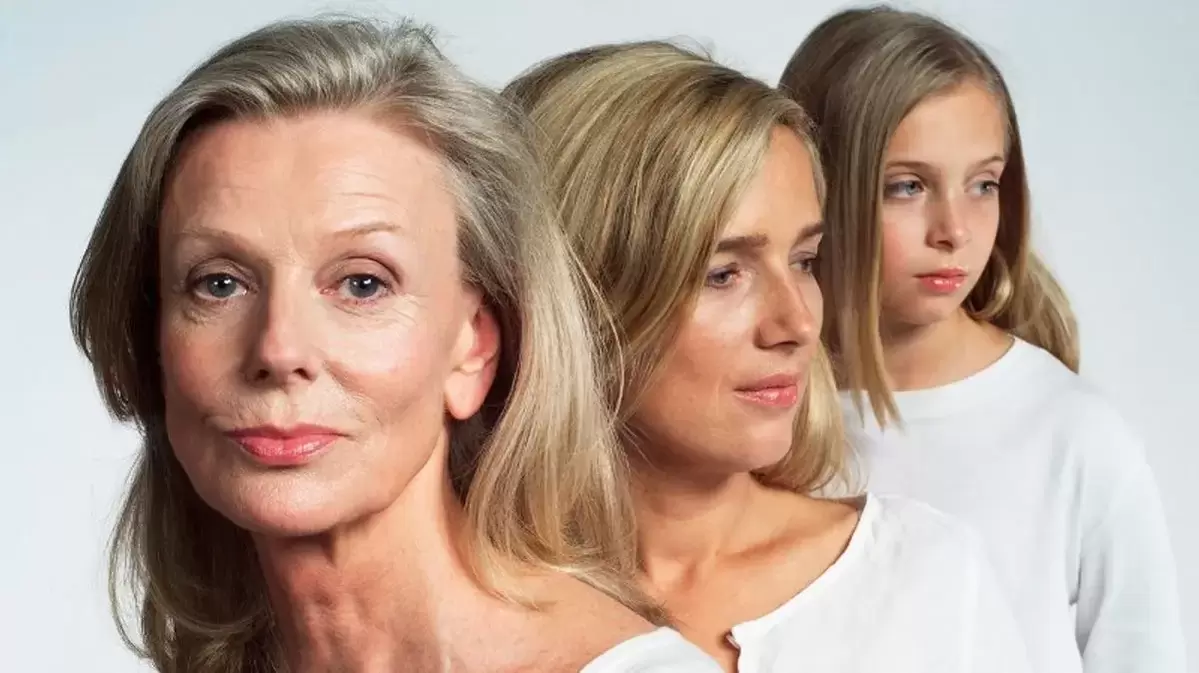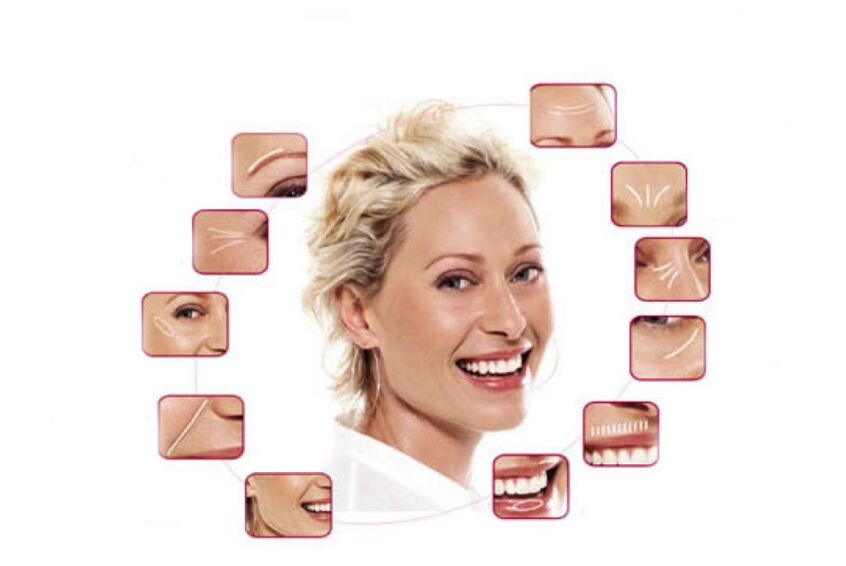
Slowing down the aging process of the skin is the cornerstone of beauty. Until recently, it was believed that the skin began to age at the age of 40, when the first obvious wrinkles appeared. And cosmetics are mainly to fight wrinkles. It is now clear that the aging process of the skin started long before the obvious signs appeared, and it started at the cellular level for about thirty years. Currently, researchers have a large amount of biomedical science knowledge in the structure and function of the skin, oxidative stress and its causes, intracellular adaptation and repair mechanisms, and the quality and intensity of cell-cell interactions.
Accepted today,Skin aging is more than just visible signs: wrinkles, uneven pigmentation, skin sagging, dryness, etc. First of all, these are signs of skin aging cells and tissues, changes in the subtle processes that occur in the epidermis and dermis.
The mechanism of aging affects the most important organelles:
- DNA-The most important element for storing and implementing genetic information;
- Mitochondria-Unique organelles provide energy for cells and ensure their survival under difficult conditions;
- Cell membrane-A regulator for external signal transmission and selective permeation of substances.
When skin cells are subjected to any external influence, complex processes are initiated in the skin cells-they exchange information and coordinate joint responses to external challenges. These processes are very active in youth. But as we age, they will gradually disappear, internal processes will appear to be unbalanced, and the skin will begin to age. This raises the question of how to help the skin effectively resist aging in the young, mature and old stages.
All theories describing the mechanism of skin aging, of which there are more than 300, can be divided into two categories-aging based on internal (endogenous) and external (exogenous) factors. Endogenous aging is caused by the information encoded in our DNA, and there is currently no way to affect this aspect. Exogenous aging is the sum of the cumulative effects of aggressive environmental factors such as ultraviolet and infrared radiation, urban smog, ozone, and cigarette smoke. At the turn of the 20th and 21st centuries, the study of the aging process by external factors has undergone significant changes. Now, no one doubts the fact that external factors determine 60-80% of the total amount of aging (facial skin data). Ultraviolet rays are considered the most dangerous.
Signs of skin aging
Age-related changes usually appear externally, and signs of skin aging can be noticed. The following is a list of the most common skin changes and their appearance. Recent research has made it possible to calculate many aging processes.
- The collagen content in the dermis is necessary to ensure the strength of the skin, and it decreases by 1% every year after the age of 30.
- After 40 years, the skin becomes 1% thinner every year.
- One skin cell recovers 100, 000 to 100, 000 DNA mutations in a day, and exposure to the sun for 2 hours can provide up to 1 million mutations.
- Exposure to the sun for 15 minutes will reduce the skin's own antioxidants (mainly vitamin C and E) reserves by 70-90%, which will take at least 2 hours to recover.
- Of all the proteins synthesized in the cell, 40% are produced by mistake-requiring the uninterrupted use and processing of cellular machinery.
- The human body contains a total of about 15 grams of hyaluronic acid, of which 10 grams fall on the skin. All the complete renewal of hyaluronic acid takes place in the body within three (! ) days-any failure in the synthesis of hyaluronic acid by skin cells will become a minor disaster for the skin.
- The elasticity of the stratum corneum and epidermis decreases. As we age, the stratum corneum becomes thicker, while the upper layer becomes thinner (from 30 to 70 years old-twice). The firmness of the skin decreases and the skin becomes dull.
- Reduce moisture in the stratum corneum. With age, the moisture content of the skin will change: 75-70% under 25 years old, 63-65% in the elderly. The skin becomes dry, the density decreases, and the sensitivity of the skin increases.
- Increased skin pigmentation. Over time, age spots will appear on the skin due to the negative effects of the sun.
- With age, the activity of the sebaceous glands will decrease. As a result, the skin becomes drier and more susceptible to free radical damage.

The main cause of skin aging is the decrease in repair rate
Even at very old age, all the functions of the skin and the regeneration process will still be retained in the human body. The problem is that their speed is slowing down. If young skin can respond to negative impulses and stop their adverse effects within 12 hours, then 30 hours are already needed for elderly skin. Therefore, it is obvious that the recovery process of the elderly is extremely slow. In other words, the intact skin of young and old is equally effective as a barrier and protection. When the skin is damaged and the damaged structures and mechanisms need to be restored, the difference becomes very obvious. Taking into account that our skin is constantly invaded by external factors, the older the age, the denser the "untreated" damage and injury snowballs. In other words, mature skin does not have time to deal with damage, they will accumulate and appear as external signs of aging. In other words, all signs of aging are "untreated" skin lesions.
Stages of age-related changes in skin and care functions
Young skin is differentIts own "youth molecule" content is high, and the recovery process is strong. Younger skin is denser and more elastic than mature skin, and its structural fibers, collagen and elastin are in order. The cell turnover rate is approximately 28 days. The first age-related skin changes occurred at the age of 25. Therefore, the main focus of cosmetics for this age group is protection and prevention. It includes preventing ultraviolet radiation, supporting the balance of water and lipids in the skin, and forcing the use of various antioxidants.
Mature skin is differentThe content of "young molecules" decreased and the recovery process slowed down. Daily stress causes more trauma and damage to the skin. Signs of skin aging begin to appear on the outside in the form of wrinkles, crow's feet, cheekbones and sagging chin skin. Here, anti-aging cosmetics must not only provide protection, but also support their own processes (protection and maintenance of cosmetics). The use of substances to maintain cell life (protect cell membranes, DNA and mitochondria) and enhance the synthesis of collagen, elastin and hyaluronic acid is local. Need to strengthen and maintain high-intensity cell-to-cell communication with the help of regulatory peptides and growth factors.
In his later years,The recovery mechanism is seriously inadequate. After 55 years, the renewal rate of skin cells has been greatly reduced, which is already 3-4 months (28 days before the age of 25). This is happening against the unfavorable background of "untreated" injuries that have accumulated. The signs of skin aging become more obvious-the number and depth of wrinkles increase, and the skin becomes dry and dull. The anti-aging cosmetics of this era are the protection, support and replacement for the lost. You can use previous age groups and their own active substances-bioflavonoids with phytoestrogens activity (replace their own estrogen levels), special ratios of cholesterol and ceramides and fatty acids to supplement the lipid barrier, intradermal moisturizers, Anti-inflammatory and vascular stabilizing ingredients.
Each of us is different. However, the processes that occur in our skin are natural to everyone. Including the aging process of the skin. In each age group, the degree of manifestation of certain changes is different. Take a closer look at yourself. Maybe you will notice some changes today. So, it's time to act! It is important to choose beauty care products according to the age and skin needs of each life stage.
Skin care products and professional treatments will help you slow down the aging process of your skin and keep your skin youthful for years to come. With the dazzling array of cosmetics and surgeries, women of any age can choose anti-aging products that suit them.














